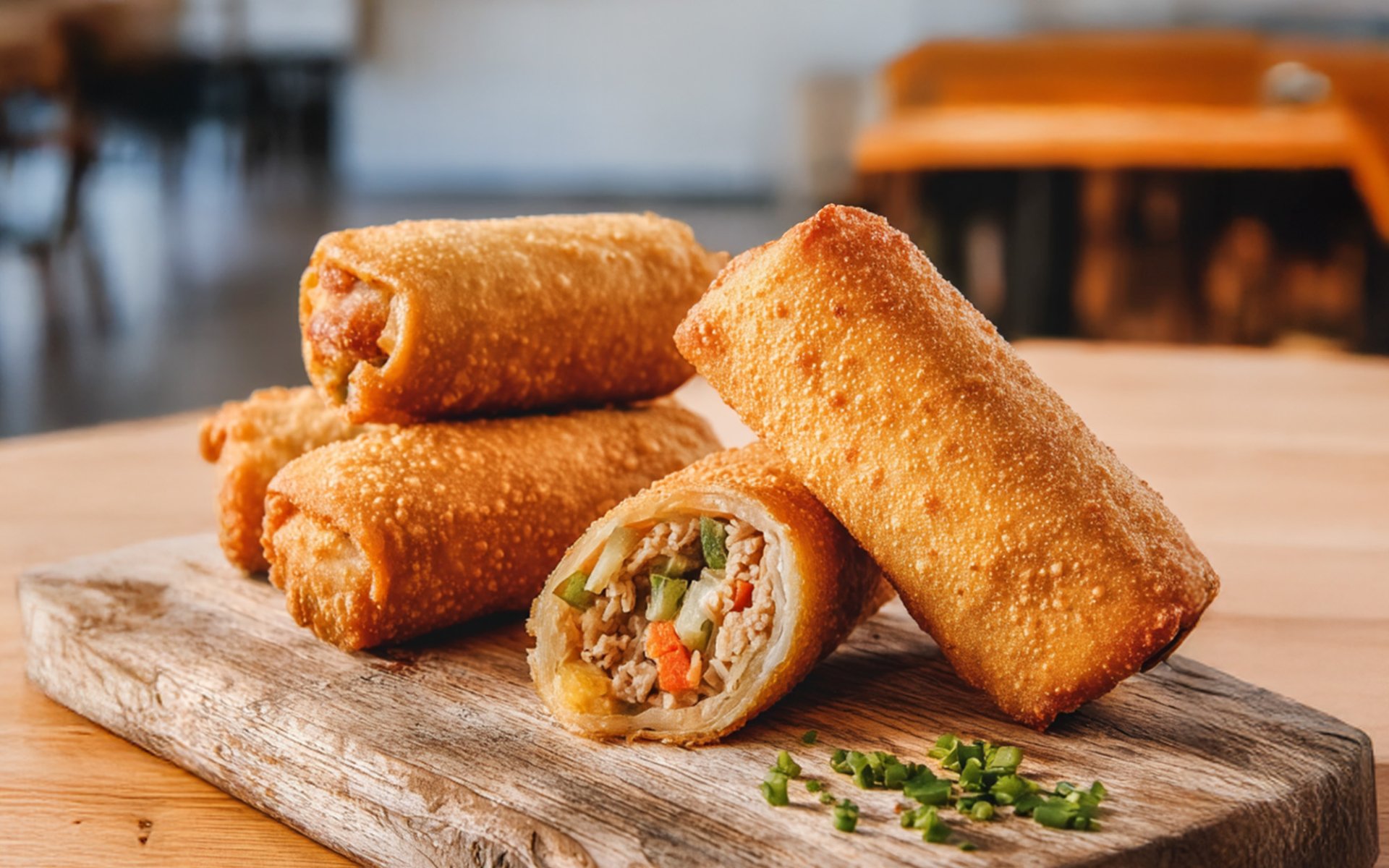Chiko Roll
Last updated: 15 Oct 2025

Chiko Roll is one of Australias most beloved snacks, first created in 1951 by Frank McEncroe. Inspired by the traditional Chinese spring roll, the Chiko Roll was designed to be larger, heartier, and wrapped in a thicker pastry, making it convenient to hold and eat with one hand perfect for enjoying at outdoor events and sports games.
The filling consists of a mixture of cabbage, carrot, onion, and meat (usually beef or mutton), wrapped in a thick, doughy pastry thats more durable than typical spring roll wrappers. The roll is then deep-fried until golden and crisp on the outside, while remaining soft and flavorful inside. Its commonly served hot, accompanied by tomato sauce or other condiments.
His goal was to make something handheld, filling, and portable, suitable for busy spectators who wanted a quick and satisfying meal.
To differentiate it from traditional spring rolls, McEncroe created a special pastry dough that was thicker and more elastic, made from flour and eggs, which gave it durability and prevented it from breaking during frying.
The classic Chiko Roll recipe included minced mutton, cabbage, grated carrot, celery, barley, wheat, and a blend of spices. The mixture was compacted to create a firm yet tender texture, wrapped in the signature thick pastry, and deep-fried to a golden crisp.
This combination made it a practical and hearty snack, ideal for eating while watching sports or attending public festivals.
You can find all the ingredients you need for your homemade Chiko Roll at Rimping Supermarket.
The filling consists of a mixture of cabbage, carrot, onion, and meat (usually beef or mutton), wrapped in a thick, doughy pastry thats more durable than typical spring roll wrappers. The roll is then deep-fried until golden and crisp on the outside, while remaining soft and flavorful inside. Its commonly served hot, accompanied by tomato sauce or other condiments.
From Idea to Invention
Frank McEncroe was inspired to create the Chiko Roll after seeing Chinese spring rolls being sold near the Richmond football ground in 1950. This sparked an idea: to develop a bigger, sturdier, and more convenient snack that could be eaten easily during sports events and outdoor gatherings no plates or cutlery required.His goal was to make something handheld, filling, and portable, suitable for busy spectators who wanted a quick and satisfying meal.
To differentiate it from traditional spring rolls, McEncroe created a special pastry dough that was thicker and more elastic, made from flour and eggs, which gave it durability and prevented it from breaking during frying.
The Birth of a National Icon
The Chiko Roll made its official debut at the Wagga Wagga Agricultural Show in 1951. Interestingly, it was originally called the Chicken Roll, even though it contained no chicken at all.The classic Chiko Roll recipe included minced mutton, cabbage, grated carrot, celery, barley, wheat, and a blend of spices. The mixture was compacted to create a firm yet tender texture, wrapped in the signature thick pastry, and deep-fried to a golden crisp.
This combination made it a practical and hearty snack, ideal for eating while watching sports or attending public festivals.
The Golden Era of Chiko Roll
By the 1970s, Chiko Roll had become a national phenomenon, with over 40 million rolls sold annually across Australia. Its popularity reflected the lifestyle and culture of the time affordable, convenient, and perfectly suited to the outdoor, sports-loving spirit of Australians.
Its success was driven by two main factors:
- Convenience easy to hold and eat without utensils, with a thick wrapper that didnt tear easily.
- Accessibility inexpensive, tasty, and appealing to the working class and young sports fans.
- A Lasting Australian Tradition
You can find all the ingredients you need for your homemade Chiko Roll at Rimping Supermarket.
Tags :
Related Content
Getting to Know Pigs in Blankets One of the Most Popular Christmas Dishes in the United Kingdom
Tracing the History of Cranberry Sauce A Dish of Great Significance for Thanksgiving


